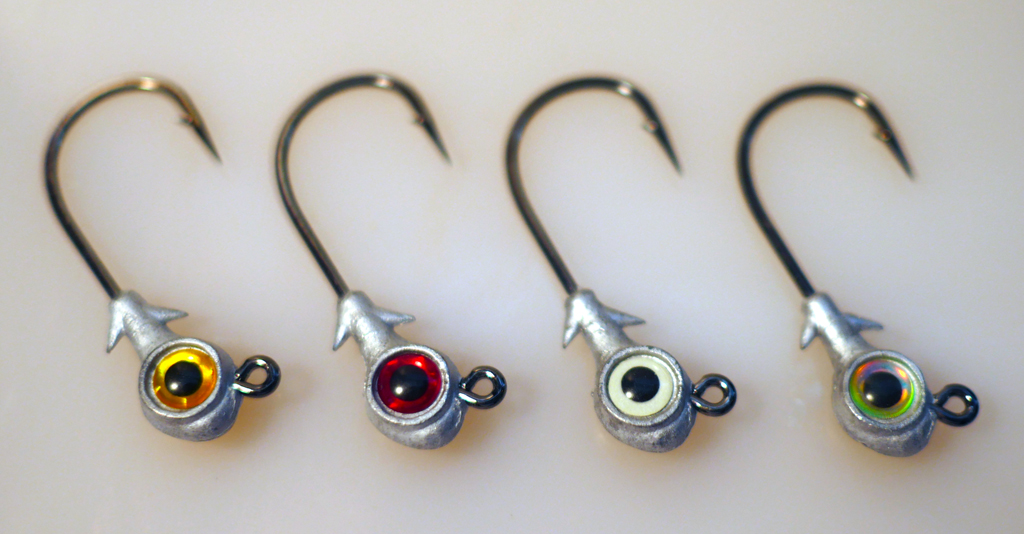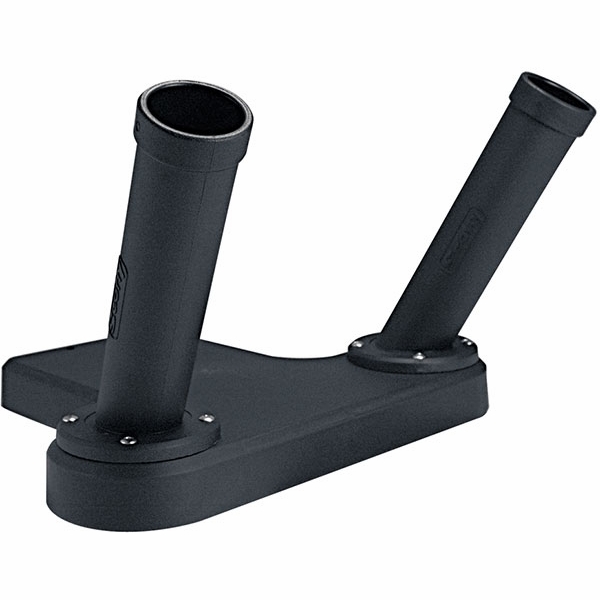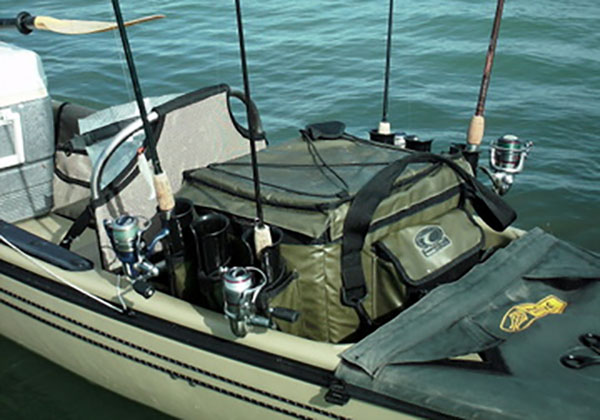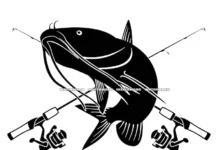June 4, 2014 By
Owner and guide, Strike Three Kayak Fishing specializing in Instruction Kayak Fishing.

Owner: www.capmel.com also known as Florida Fishing Magazine
Get organized. One of my best attended seminars is the Efficiency session. That seminar is to get people to eliminate errors and just catch more fish. I usually will mention that the reason I may catch a couple more quality fish per day against someone with similar skills is because I have my system. Because I have my system, I do things quicker with less wasted time which translates to more time with my lure in the water, more fish seeing that lure and more fish deciding to eat my lure.
The efficiency thing breaks off into all kinds of tangents and spinoffs. For the purposes of not writing a novel (which I am actually doing incidentally) I will talk about efficiency and how it relates to organizing and storing our tackle and equipment on your kayak. I will also say that there are people who regularly attend my seminars who do not even own kayaks because these lessons apply to pretty much all water users in one way or another.

The “working area” is what I call the cockpit section of the kayak in between and under my thighs and knees. The items I use the most during a day on the water are going to be in my shirt pockets or the working area. Items I need but use less frequently will be stored in The Fishing Buddy (my crate system). Scissors, pliers, lures, leader line and sunscreen are items that are regularly in my working area. The Fish Grip is something I keep clipped off to the handle of my Fishing Buddy, in easy reach. Spare batteries, first aid kit, unusual lures, a compass, flare gun and other items that are not a daily basis use item are interior of the crate.
Secondary (but nearly primary) crate function: Rod holders. My Fishing Buddy has six rod holders, keeping the reels high and dry away from the water and securely inside the boat. You can consider Scotty rod holders for the accessory rail tracks but most of my extra rods are in the straight upright rod holders of the Fishing Buddy. Scotty has a lot of accessory options (watch for a description and review of those items coming soon!)

Utilization of other places like the back side of the seat, the sides of the crate and even the outside edges of the cooler: Tackle Webs is an item that Captain Mike Ortego invented. For people who want to create some extra storage situations, look at what he has designed. The back of kayak seats, sides of crates, if you own a boat, the sides of the poling platform he appropriately named his product. Mesh netting cargo-style storage pockets? Brilliant idea. And allows for more immediate access to items that will not have to be buried in the bottom of your crate.

I do not personally use this one but it is an option: There are vests with a lot of pockets you can have to organize different tackle. I rely on my two shirt pockets (as a guide, one for my camera and the other scissors and/or pliers).
Various baits: How are you going to be organized and be able to find your lure and tackle choices faster? The worm bag is irreplaceable for anglers who carry large quantities of plastic baits. A magazine of lure choices by style or color, you can organize and carry large quantities of these baits in a worm bag. For hardware and other baits like topwater lures/plugs, the way I store and organize them is with Plano boxes or various sizes. For my jigheads I actually have one of their smallest boxes that has the waterproof seal. You can use these for smaller quantities of plastic lures and if you do this and have a lot of different lures, meaning many Plano boxes: Labeling: Come up with coded markings where you will know what is in each box at a quick glance. Picking up each one you should be able to easily see through the plastic what is in each one. If they are on end in your crate, it really helps to have a labeling system. A paint pen will hold up better than other options but you could also use decals applied to the clean surface as well.

“The Tackle Box”?
I say, OK as long as it is a small one. This is a great option for the person who is smart enough to be a minimalist with how much they take. The smaller tackle boxes just fit better than the big bulky ones and there is plenty of room for bags of lures in the bottom bin and plenty of slots for jigheads, spoons, plugs and miscellaneous items You can keep your scissors and pliers in the box. Coming soon: A complete review on Plano tackle organizing systems.
Ancillary to smart storage, preventative loss is another thing to consider. A recent rollover due to water in the hull of a kayak, I was amused that “the only item that could sink” was in my pocket. It was a non charter day and so I was “bare minimum” of equipment. If you are prepared, you may not lose as much if you have a rollover. Tethering is a great option. Mentioned above, Tackle Webs hold items in place because they are locked into that location and items will not slide out. Bungees or rope/string will prevent the “reefing” of things that sink. Adding a float to other items also has obvious advantages. Adding a brightly colored strap with some kind of flotation will keep an item where it can be retrieved if you take an unexpected spillover. Your crate: Better to have one that has a lid than not and also, not a bad idea to run one bungee through the handles where it stays pinned to the craft if you do go over. The goal, obviously to keep more of the contents of the crate in it and do not have it sink or float off the boat when the incident occurs.
Tips to think about when you have a rollover or face any other situation where gear could be lost?
What to grab first?. The kayak flips over, what is your plan of action for grabbing items that have entered the water? In a pretty specific order: Fishing rods, the dry bag, anything that can waterlog and sinks. Leader line spools are an item where you have a limited amount of time before they fill with water and sink.
Obviously: Things that float can be last retrieved. If your anchor deploys, leave it alone until the end of your effort to secure all of your items. Anything that “sinks like a rock” on rolloever? It will be on the sea floor next to the anchor. If your plies come with a sheath, have it in the sheath and the sheath attached to something. If you don’t: You are probably going to be doing this “circular search around your anchor” for this item. If you do not have expensive pliers, it is probably not a big deal. My Boomerang pliers? I try to keep that somewhere nice and safe. Unencumbered with “no strings attached” I know the risks of dropping these in the water or where they go if something did happen.
The overall theme with tackle management is this, something I teach to my clients: “Everything as its place and you need to keep it there if the system is going to work.” Mentioned already, the location of items is prioritized. Heavy use items should be in your pocket, in the “working area” or on the top of the crate. Other items are buried deeper because they are not needed as much. However, is it not more efficient when you do need it you know exactly where to find it?
Also keep in mind, safe storage is efficient storage. You are in a water environment. Many of the items you have stored do not do well if they come in contact with water. Flashlights and various batteries have their own dry bags and placed in an elevated position in the Fishing Buddy. For those who live in colder climates, spare clothing in larger dry bags can save the day. For me, I will do this in January and February here locally. Someone gets a chill, a dry jacket is something that can really end a miserable condition.
Get organized and stay organized. As you use up items like batteries, sunscreen and bug repellents, immediately replace those items. Make that part of your checklist. Empty containers should trigger the idea to check the inventory and then restock what is running low so that you are not caught shorthanded out there. That goes for fishing lures too. Watch tackle levels in your containers and react accordingly.
Make it easy on yourself: Find a system that works for you and try to be diligent about adhering to some basic principles.
Neil Taylor
Owner and guide: www.strikethreekayakfishing.com
(Cell) 727-692-6345 LivelyBaits@aol.com
Owner and site administrator: www.capmel.com
- The Neil Blog… - July 26, 2023
- The Catfish - July 26, 2023
- update - July 22, 2023











